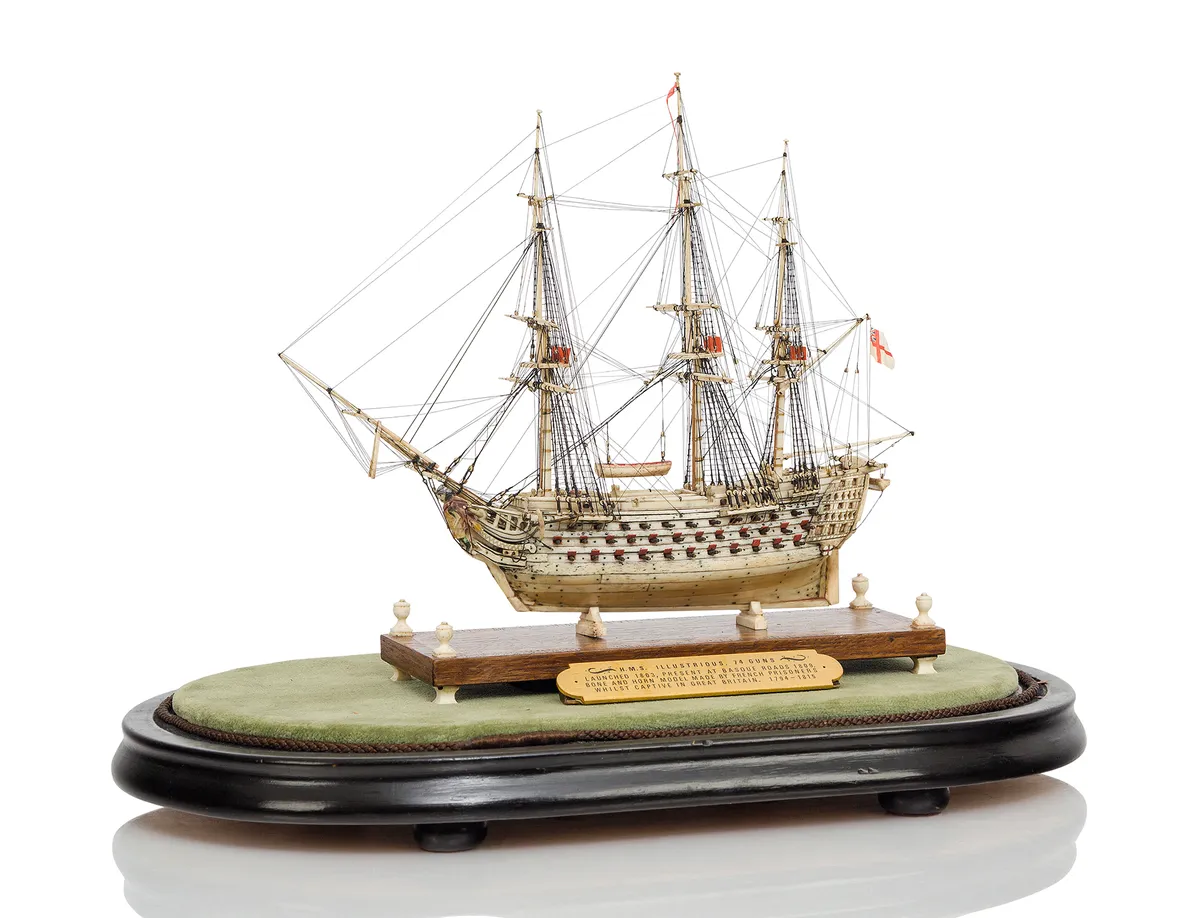The tradition of making model ships has a long history, transcending national boundaries, reaching back to early civilization. The Egyptians, Greeks and Phoenicians made model ships – some as votive objects, others were design prototypes, toys or for household uses, such as lamps.
In Britain, among the most highly prized models of ships are Admiralty Board from the 17th century. ‘They are probably the most desirable models it is possible to see or acquire, the first accurate and detailed ship models ever made. Their detail and quality are jaw dropping,’ says maritime specialist auctioneer Charles Miller. ‘If you were to measure the main gun deck and it was out by more than 3mm it would be considered inaccurate. And considering you are talking about a model that’s 300 years old, that’s pretty extraordinary.’

The golden period for this type of model starts c1650, and lasts for around 60 years, although they continued to be made until the end of the 18th century. Their exact purpose remains uncertain. ‘We think they were made by shipwrights, principally to record the shape and decoration of a ship at a time when technical drawings hadn’t really evolved. During Napoleonic times, models made by prisoners of war took centre stage. Dating between 1793 and 1815, these were made by French sailors held in Englishprisons or on prison hulks. ‘The conditions under which they were made were extraordinary. They used the materials they had to hand including beef bone, a by-product of their rations, and boxwood. There are all sorts of theories about how the prisoners produced them. Probably some were done to commission and involved negotiation with the buyer to get the materials the maker needed, others were sold at markets,’ explains Charles. Named models made up around 10 per cent of output and now command a premium. However, unscrupulous dealers have been known to add names to ships after they were made to boost value.
Did you know?
In the 1667 Dutch attack on a British fleet in the Medway, rather than defend the ships, Peter Pett, Commissioner of the Chantham Dockyard, escaped up the river taking the ship models with him!
Shipyard or builder’s models were also popular. ‘These were mostly produced by the shipyard where the ship was being constructed. The cost was included in the price of the ship and the model was given to the people who commissioned her, to be displayed in the boardroom or reception area.’ Specialist model-making firms, such as Bassett-Lowke, made shipyard models as well as producing a variety of other types of models from the early 20th century. Souvenir models of cruise liners were made to be sold to passengers as well as toys and parts for scratch-built models (those built using original materials, rather than kits).
‘They also sold recognition models – to be carried on board warships in the days beforesophisticated radar, so that if you were steaming at sea and saw a profile on the horizon you could try and work out if it was friend or foe,’ says Charles.

Today, the market for model ships remains resilient. Admiralty Board models represent the pinnacle in terms of value, the best fetching hundreds of thousands of pounds. Prisoner of war models, especially those with bone hulls, and shipyard models dating from the pre-war period, are also highly sought after and good examples fetch tens of thousands of pounds. Models from the later 19th and 20th centuries, and those that are not contemporary with the original vessel, are more affordably priced, at around £500. Although, as a rule of thumb, Charles advises avoiding those made from kits. ‘I see countless Victories and Cutty Sarks,’ he says. ‘They have to be scratch built and high quality.’
What to look out for when buying an antique model ship:
1
A model that is of the same date as the vessel it represents
2
An original name on the ship – especially if it had an interesting history
3
Prisoner of war models made from bone or boxwood, ebony or baleen
4
Fine detail and craftsmanship
5
A good maker, such as Bassett-Lowke
6
Pre-war shipyard models
7
